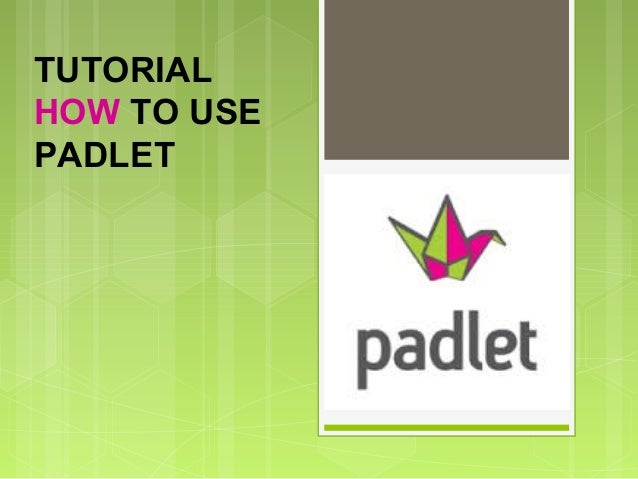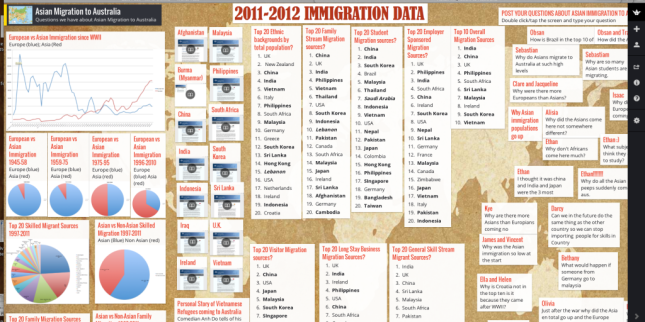Last week the online ed tech community was buzzing about the recent changes to Padlet‘s pricing structure. Padlet is a robust service with millions of visitors so it was only a matter of time until they had to start charging more for their premium offerings and offer less in their free plans. For many teachers these changes have meant that they’re now looking for alternatives to Padlet. While none of the following tools have as many features as Padlet, they all provide the core element of a digital wall to which you apply digital notes. Here are six alternatives to Padlet to consider trying.
Pros and Cons list to generate ideas and curate research before a class debate on a topic. 'Move' ideas around to generate themes for a persuasive writing topic; Collaborate on a group project by sharing ideas using Padlet; Vocabulary development; Use a Padlet wall as the writing prompt. Some educators use Padlet to understand the students more personally as it is an important area in modern day personalized learning process. Students are provided with a set of question such as personal interest, favorite subject, food habits, favorite sports etc, and this is done right in the beginning of the session.
Dotstorming
Dotstorming was built for people to share ideas in the form of digital sticky notes and then vote for their favorite ideas. It works well for that purpose. Students do not need to have email addresses in order to vote on notes posted on Dotstorming. A free account allows you to have three topic boards at a time. The paid account ($5/month) gives you unlimited access. There is also a school-wide pricing plan. Watch my video embedded below to learn how to use Dotstorming.
Lino
Lino, sometime referred to as Lino.It, provides digital walls or corkboards to which you can add sticky notes that contain text, images, videos, or document attachments. Notes containing video links will play the video within your Lino wall. Images can be uploaded to your notes. And you can attach document files to your notes for other people to view. Like Padlet, Lino lets you change the background color scheme for your walls.
The best feature of Lino is the option to create private groups. You can invite people to join your group via email. Once they have joined you can create private Lino walls to which all members can make contributions.
Wakelet
Wakelet is the newest entry into this market. It offers a clean and easy-to-use user interface. On Wakelet you can create what they call collections. A collection is a set notes that you create. Your notes can include text, videos, links, and pictures. The options for adding pictures are linking to an online image, uploading an image, or by using Wakelet’s Unsplash integration. Like Lino, Wakelet requires you to email invitations to your potential collaborators.
Scrumblr
Scrumblr is a site that provides an online space to create and share sticky notes with a group. Scrumblr can be used by anyone to quickly create an online space for sharing stickies. To get started just enter a name for your space. The name you choose will be a part of the URL for your sticky note space. To add notes just click the “+” symbol in the bottom left corner of the screen. Double click to edit your existing notes.
Pinside
Pinside is a free online sticky note service. Pinside can be used to create boards of notes for yourself or boards to share with others. You can create a mix of private and shared notes within one account. Sticky notes on shared Pinside boards are designed for creating to-do lists. As each item on the the notes is completed you and or your collaborators can delete completed items.
Flipgrid
If you have been using Padlet’s video recording feature and you haven’t tried Fligrid, try it. The basic idea behind Flipgrid is that it enables you to post a video prompt and then have your students respond through video by using the webcams in their laptops or through the cameras on their smartphones or tablets. All responses are collected and displayed in a grid format. Watch my video about Flipgrid right here.

These were last week’s most popular posts on FreeTech4Teachers.com:
1. 5 Alternatives to Padlet
2. Reminder – The Library of Congress Seeks a Teacher-in-Residence
3. ReCall Study Time – An Extension to Get You Back on Task
4. Goo.gl Is Being Shut Down – 5 Alternatives
5. How to Quickly Create a QR Code for Almost Anything
6. What Causes Body Odor? – A TED-Ed Lesson
7. New Science Lesson Plans from Storyboard That

Ditch TPT & Keep More of Your Money!
This Thursday at 4pm ET I am hosting a webinar titled How to Ditch TPT and Sell Your Digital Products. This webinar is for folks who have used Teachers Pay Teachers and were not happy with giving 20-45% of their sales revenue away. It’s also for those who have ever thought about trying to sell their digital products. I’ll show you three ways that you can sell your digital products without using TPT and keep more of the sales revenue in your pocket.
Book Me for Your Conference
I’ve given keynotes at conferences from Australia to Alaska for groups of all sizes from 50 to 2,000+. My keynotes focus on providing teachers and school administrators with practical ways to use technology to create better learning experiences for all students. I like to shine the light on others and so I often share examples of great work done by others as well as my own. Click here to book me today.
- Lindsay Warwick
- CELTA trainer, materials writer and teacher... read more
An excellent collaboration tool for teachers and learners.
- Who it’s for:
- All ages (young learners with parental consent)
- Price:
- Free (limited), Backpack: plans start at $12 USD/month
- Platform:
- Website iOS Android Chrome, Safari and Firefox extensions
Padlet is an extremely easy-to-use tool that allows learners to collaborate online by posting text, images, links, documents, videos and voice recordings.
User experience.
Users can access Padlet via a website or app. Setting up a board requires registration but it’s easy to do. You only get three Padlets (think noticeboards) for free but you can recycle them, or upgrade for more. Setting up a Padlet takes just one click of a button – it’s that simple! You then share the link with learners who add posts by simply tapping or double clicking, either in class or at home. It’s extremely easy to use. Modifying your Padlet takes a bit longer but if you follow each step, it’s not hard to do.
Language level and skills.
Padlet is a tool that teachers can exploit with any level of learner. As learners add their own posts, what skill they develop depends on what task given is to them. Learners can develop writing skills (e.g. write a short description of a person you admire) or speaking skills (record yourself telling an anecdote). They can also brainstorm vocabulary related to a topic to activate existing knowledge before a reading or listening text. As learners all type their ideas at the same time, it’s an inclusive and efficient way of collecting ideas.
Language learning content.

Padlet doesn’t provide any content for teachers or learners. Instead, it provides the opportunity for teachers to share content in the form of links e.g. to videos or online articles to watch/read. It also allows learners to share learner-generated content in the form of text posts, audio recordings, video or documents. It’s great for project work, as learners can go away and research something then report back on a Padlet. It should be noted that the free version allows video files of just 25mb so this is a feature that only really works if you upgrade.
Tracking learning.
More Ideas For Using Padlet Technology
Padlet doesn’t track learning itself but it does allow teachers to monitor the understanding or use of English of all learners in the class. Let’s imagine that learners all have to share as many words as possible that they remember from the previous lesson in two minutes. The teacher can assess how well each learner remembers the words. If learners record audio or write a short text, the teacher can assess their use of English and provide feedback. Padlet is also great for peer feedback, as learners can read or listen to each other and provide feedback in the comments.
Social interaction.
Padlet allows for synchronous or asynchronous collaboration. Learners can share ideas, materials, audio and video. They can then comment on these. The comments option does need to be turned on though, as it’s off by default. When creating a Padlet, you have different formats to choose from. The Backchannel option provides a forum style format where learners can discuss a topic as they might on social media. Teachers could create a Padlet in this format for each group of learners in a class and ask them to discuss a topic and come to an agreement for homework.
Learning through language.
One problem some learners have is with coming up with ideas of what to say in English, for example in discussions, debates or essays. Learners can use Padlet to share ideas before they do any of these things. It pushes them to come up with one idea, but they can learn from others’ ideas too which may prompt even further ideas. Teachers can then encourage learners to think more critically about these ideas e.g. rank them in order of validity. This preparation could be done in class as part of a lesson or for homework in preparation for a classroom activity.
Supporting teaching and learning.
Padlet is a platform which gives learners a wider audience for the work they produce i.e. their classmates, and parents or guardians. They can receive feedback on their work, as well as look back at previous work to identify progress. For the teacher, Padlet helps them to better assess the learning of everyone in the class, something that can be tricky even with medium-sized classes. The teacher can then use what they see to assess learning and inform the rest of the lesson and future lessons.
Technical: user safety and data security.
Teachers have to register but it means they can delete Padlets, and edit and delete posts. There are different privacy settings too. There are some very helpful video tutorials and a knowledge base section where you can find answers to questions. The free version of Padlet has adverts but only on the page of the person who sets up the Padlet e.g. the teacher. Padlet says they collect data and share them with third parties but only to enable them to run their service. You can find out more in their About section under Privacy Policy.

Reviewer’s impression
An excellent collaboration tool for teachers and learners.
Keywords
vocabulary, grammar, reading, writing, speaking, listening, integrated skills, topic-based learning, primary, secondary, adult, collaboration, communication
Price
Free (limited), Backpack: plans start at $12 USD/month
Platform
- Website
- iOS
- Android
- Chrome, Safari and Firefox extensions
Learner language level
- All levels
Learner age
- All ages (young learners with parental consent)
Content advice
- Content is produced by the teacher or learners.
Pros
- Easy to set up.
- Easy to use.
- Students can access it quickly.
- Students can use it at home.
Cons
- It’s important to select the right layout or posts can get messy.
- It’s important to manage posts to ensure nothing inappropriate is added by learners.
- It can be difficult to see all the posts when viewing Padlet on a phone.
Links
Products are evaluated using Cambridge Assessment English product review criteria, but all opinions expressed are the reviewer’s own.
More Ideas For Using Padlet Tutorial
For learners
- Can share knowledge, ideas, work.
- Can get links to materials the teacher wants them to look at.
- Can assess each other’s work.
- Can access it in class or out.
For teachers
More Ideas For Using Padlet Shapes
- Easy to set up and use.
- Can make the learners’ work password protected.
- Can share links to videos, websites or upload documents for students to access in or out of the classroom.
- Can assess students’ learning more easily.
- Can edit and delete posts.
- The free version is comprehensive.
